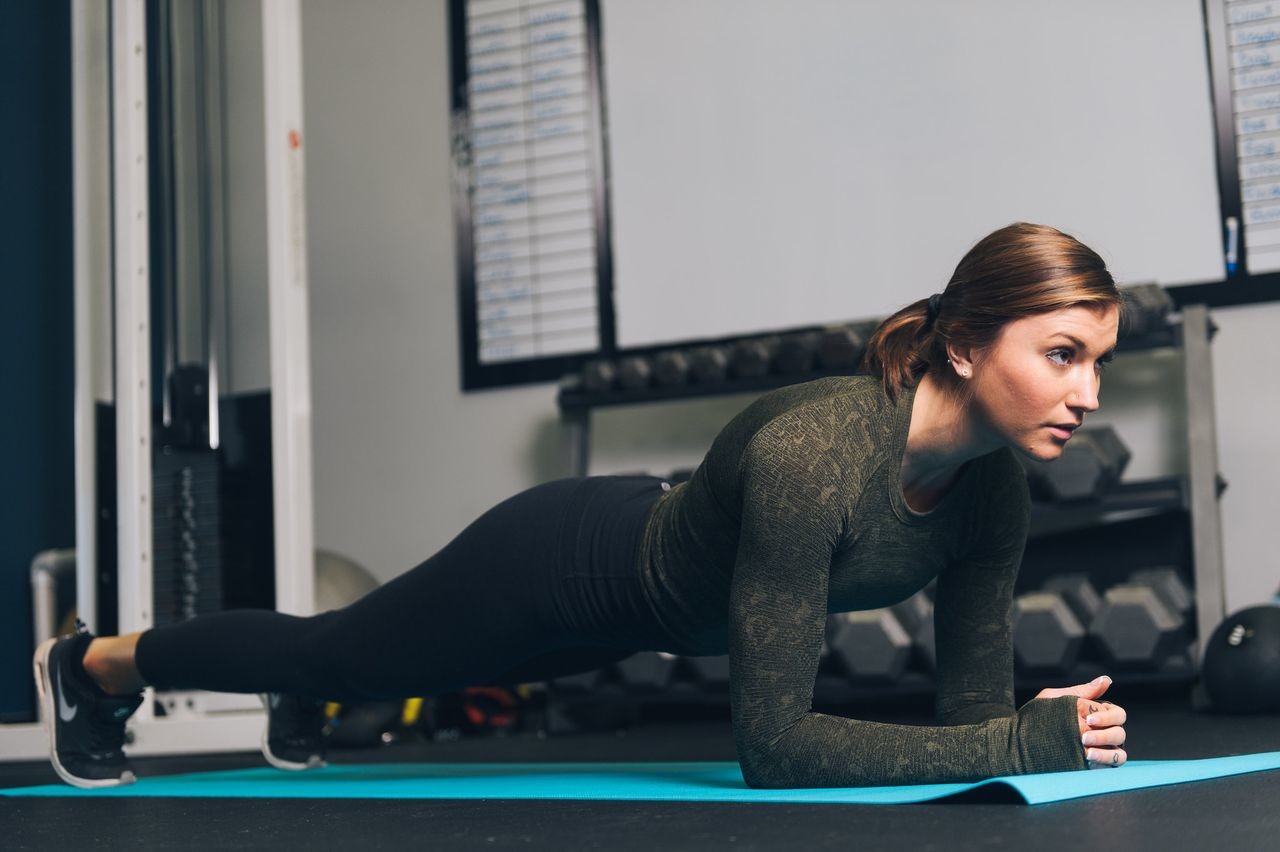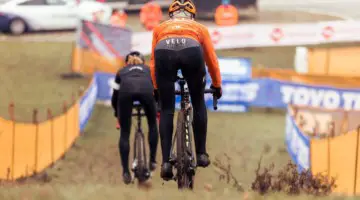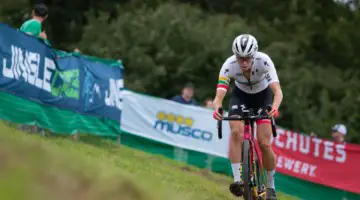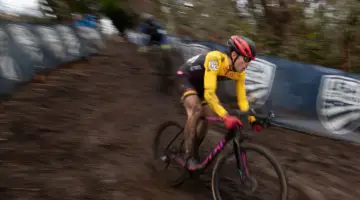One year I had some friends over to watch Cyclocross Nationals. As they were leaving a few of them took a try at strict pressing my 16-pound kettlebell as a sort of feat of strength. I think most cyclists have some sense that they should be able to use the part of their body that holds up their jersey but don’t really have any sense of how to start, what to do or even why they should.
Let’s talk about all of that and then some.
First, let’s define some terms. Most people think about core first. But what does that mean? It doesn’t mean six-pack abs. Those are largely made in the kitchen. ‘
Core means the many muscle groups along the front and side of the body, along with a few internal muscles. The core acts as a series of wires that keep the spine in a stable and strong position. Some of them also act to hold the pelvis in a powerful position so the glutes can do their job.
Your arms include the obvious bicep and triceps but are largely driven and stabilized by the rotator cuffs that are on your upper back (among several muscles). Lastly, you have several muscles on your back that also help stabilize the spine.

Core exercises are essential for cyclists. photo: thoroughlyreviewed.com, used under a Creative Commons license
So why should you care about any of those muscles, since they don’t propel your bike?
The most salient argument is you need a strong core to hold your pelvis in a stable position so your glutes can do their work. When your core fatigues past point your pelvis rolls (think of how Instagram models pose), that takes your glutes offline and makes the quads pick up the slack. That reduces power production and can contribute to other issues such as back and knee pain down the road.
The core provides stability in a line from head to toe but also helps it resist twisting motion as well. Think about doing a one-armed plank or push up. That ability to resist twisting is critical to handling skills in technical terrain, otherwise every bump will knock you off your line. The core also allows you to isolate your legs from your arms in the same situation so you can pedal forcefully while also steering the bike and not just choose one or the other.
I’ve always thought this video was such a good example of the above.
https://www.instagram.com/p/BbFtYpBDjaF/
That’s a very technical and off-cambery section Hyde is pedaling through, and he was one of the few to be able to ride that line. His core is allowing him to pedal in a straight line while also isolating his upper body from the bouncing going on from the lower body. And he is someone who has made a big commitment to core strengthening as part of his daily routine.
The shoulder stabilizers are more about long-term health, especially for people who sit at a desk all day. You spend hours with your shoulders rolled forward on the bike and may spend even more time in that same posture at your desk. Those muscles eventually become very weak which can create a lot of pain in daily activities or an inability to move your arms in certain ways.
Some of the other muscles involved in the shoulders also help stabilize the spine. Shoulders are easy to get into trouble and can be hard to get them out of. If you spend 40+ hours a week sitting and riding you might want to do something about that.
So what should you be doing?
I’m going to keep this part pretty vague. In large part because I don’t know what your specific issues are. And I’d really rather you talk to an expert about that or do some research yourself. I will say that this is a golden age for physical fitness both online and in person. I’ll list some good links at the end.
Any gym, physical therapist or CrossFit box would love to have you stop in and chat with a trainer for a bit. There are really a lot of great options these days.
In general, look for bodyweight exercises or movements that use a band. It’s hard to get in trouble using just your body weight. Bands are great for building body awareness or getting your toe in the water for a movement you find difficult.
For core stability and strength I’d start with the McGill Big Three.
They are simple to perform, don’t require equipment and you can scale the time you spend on them to your needs. Also, the side plank will help with one of the main stabilizers of the knee so it’s a good two-fer. You can even start with a well-executed dead bug variation. That’s a really great place to start.
For core rotational stability you can start with Pallof presses. If you can do them a well-executed plank with a one-armed hold is great too. Bird dogs can also do a good job here too, depending on your needs.
Shoulders can be a bit tricky. In general look for banded rotator cuff exercises. With these, but really all of the above, focus on slow controlled movements. You’re looking for quality, not just slamming out reps. I personally am a huge fan of the Crossover Symmetry rigs (both for shoulders and hips) but that might be more than you want to spend. But they are well designed and easy to use and come with their own workout plan.
When should you be doing these?
I think now is a good time to start. It’s easier to get into new habits now and you’re spending less time on the bike, freeing up time for other things.
Also, don’t get locked into big blocks of time. Sprinkle in a movement here and there throughout the day, rather than big blocks of time. It’s easier to commit to the smaller blocks, and you’re better off sprinkling a little bit throughout your day rather than one block once a day. To use a metaphor, eating a salad once a day doesn’t mean you have a healthy diet.
Tactically, my personal hack is I have a 2-minute timer set on my watch. You can almost always find 2 minutes to bang out a little movement here or there.
I’d encourage you to do a bit before you ride as activation. If you can do some after you ride that’s great too. If you’re really tired, find a less taxing movement post-ride or dial back the number of reps or the duration of the holds. Something is always better than nothing and even a little bit over a long time goes a long way.
My other hack is to not allow myself my nightly bourbon until I get some work done. It definitely isn’t happening afterward!




























